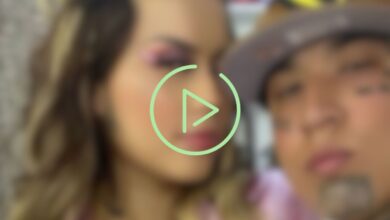Metropolitan Museum of Art secretly sold $70m Van Gogh looted by Nazis: lawsuit
[ad_1]
The Metropolitan Museum of Art is being accused of “secretly” selling a Van Gogh masterpiece looted from Jews fleeing the Nazis — and trying to organize a cover-up designed to last for 100 years.
The museum is being sued by a Jewish family who owned “The Olive Picking” before World War II and want it back. It could be worth $70m.
The painting was bought by the Met in 1956 from Brooke Astor — the socialite who died aged 105 in 2007 — then sold secretly in 1972 and vanished from public view.
It only surfaced in 2019 in the catalogue of a newly-opened gallery in Athens, Greece.
That breakthrough allowed the family of Jewish collector Hedwig Stern, who died in 1987, to piece together what they now allege had happened.


Now nine of Stern’s heirs are suing both The Met and the Greek museum’s operators, the Basil and Elise Goulandris Foundation, in federal court in northern California for its return, saying they are the victims of decades of cover-up and lies.
The Met is fighting the case, saying it had no idea the work was looted. The nine who plaintiffs include Stern’s grandchildren and step-grandchildren, who now live in Oakland and Los Angeles, Calif, Washington state and Israel. Their attorney declined to comment.
The case threatens to open the Met’s secret files about one of its most storied curators, former “Monuments Man” Theodore Rousseau, who bought and sold the Van Gogh.


“The Olive Picking,” painted by the Dutch artist in 1889 just before his death, was bought in 1935 by Stern, an heiress and a doctor’s wife, from Munich’s Heinrich Thannhauser Gallery, adding to her collection of Impressionists.
But when she, her husband and their six children tried to flee the rising tide of Nazi persecution in 1936, the Gestapo stopped them from taking “The Olive Picking.”
She ordered her lawyer to sell it and a Renoir through the same gallery. The Nazis simply kept the 55,000 Reichsmarks; Stern and her family found safety in Berkeley, Calif.


In 1948, Thannhauser’s son Justin brought the painting to New York and sold it to Vincent Astor, whose financier father John Jacob Astor IV had died on the Titanic, and who in 1953 married socialite Brooke Russell.
In 1955 Brooke Astor asked Manhattan gallery Knoedler & Co. to sell the Van Gogh to a museum, according to court papers.
Rousseau, the Met’s curator, approved the $125,000 purchase — even though Knoedler was on the State Department’s “red flag” list of dealers in Jewish looted treasures.
“The Olive Picking” was also on a separate list of looted art because Stern tried to recover the painting after the war, traveling to Munich and Washington to meet with US officials “with no success.”


And Rousseau would have known the truth about the painting, say Stern’s descendants, because he had been part of the elite unit known as the “Monuments Men,” which had traced and recovered Nazi-looted art as Allied forces swept aside Hitler’s regime.
A US Navy officer, he worked for the Office of Strategic Services, the precursor of the CIA, investigating Nazi art theft until 1946. “He was one of the world experts on looted art,” the Stern family contend.
“Looted Nazi art was all over the art market at that point,” said Michael Gross, author of “Rogues’ Gallery: The Secret Story of the Lust, Lies, Greed and Betrayals that Made the Metropolitan Museum of Art.”


“The dissection of provenance was nowhere near as sophisticated as it is now,” he told The Post.
Stern’s descendants allege Rousseau worked around State Department rules that would have alerted museums to the purchase.
Then in 1972, they say, Rousseau turned again to Knoedler to organize a hush-hush sale for an undisclosed amount which the Met said was more than $75,000.
The sale was kept secret for months, then condemned as a “a breach of public trust” by the Art Dealers Association of America, the New York Times reported at the time.


The Met said at the time that it was a “lesser work” being sold to help buy a $5.5m Velazquez painting. But the Stern family says that was a lie; that painting had been bought in 1971 with money from, among others, Brooke Astor.
A similar Van Gogh work –“Wooden Huts Among Olive Trees and Cypresses” — sold at auction in 2021 for more than $71 million.
Rousseau died in 1973 and the Met ordered its archive of his papers sealed until 2073, which the Stern family say will let the museum keep the truth about their Van Gogh secret for decades to come
The painting’s ownership is still unclear, the Stern descendants say, with the apparent 1972 buyer being Greek shipping heir Basil Goulandris and his wife Elise. They amassed a $3 billion collection before their deaths.


The couple’s foundation listed “The Olive Picking” in its 2019 catalogue for its new Athens museum, but did not say it had belonged to the couple or disclose Stern’s ownership. The foundation refused comment through a spokeswoman, citing the litigation Wednesday.
The Met did not return a request for comment, but a spokesman told the Art Newspaper in 2022 that “during the Met’s ownership of the painting” there had been no record that it belonged to the Stern family, and added, “that information did not become available until several decades after the painting left the museum’s collection.”
[ad_2]












